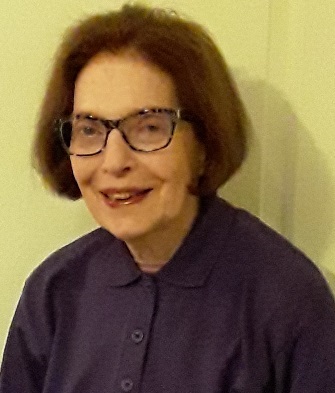Rivanne Sandler
Reading books was an early habit encouraged and aided by the librarian at our local library. I enjoyed reading novels, especially by the British novelist John Masters who wrote about the British experience in India. This habit was the precursor of a lifelong pattern of using literature to find out about unknown worlds and the lives of strangers. My best subject in high school was history, with literature a close second. After finishing high school, a circuitous academic path included undergraduate study at the University of Toronto in Sociology and Political Science. I wanted to pursue graduate studies in history and visited the Department of Near Eastern Studies since my undergraduate courses in NES had stimulated my curiosity. The chair of the department asked me if I would be willing to study Arabic as a prerequisite to acceptance. I answered yes. Due to my lack of an undergraduate degree in NES, I was admitted as a ‘Special Student’. After completing two ‘make-up years,’ a one-year MA program followed in the newly created Department of Islamic Studies. I was strongly encouraged to study a second Islamic language for my MA degree, and I chose Persian. The graduate program in Islamic Studies offered courses on the history, religion, culture and literature of the medieval Islamic world (essentially the Middle East). I chose courses on medieval Persian Literature to the degree permitted by the department’s concept of adequate preparation for advanced graduate work. My Ph.D thesis examined the sources (in Persian) for the reigns of the first two Delhi Sultans in the first half of the 14th century. Not without a difference of opinion with my supervisor who had his idea of what a bona fide thesis on the Muslims in India should look like, my interest turned to an interpretive handling of the primary historical sources (an approach which was non-existent in the secondary sources) which I thought would open a door to understanding the relationship between Muslim rulers and their Indian subjects (and by extension Muslims and Indians). I did not pursue my graduate work on the history of early Muslim India.
The first course I taught was on a subject that drew on my personal interests and studies: a second-year course entitled Middle Eastern Society: Traditional and Modern. Using newly available English translations of the literary works of modern Middle Eastern writers which began in earnest in the 1970s, I added literature to history to humanize the study of an unknown and exotic area of the world for primarily Canadian students.
To celebrate the completion of my graduate studies and appointment to the faculty in The Department of Islamic Studies (which became The Department of Middle East and Islamic Studies and is now NMC), I made a solo trip to Persia to experience for myself the country I had studied and appreciated for many years of my life. On my first trip, I spent three months touring Iran (except for the very hot south), meeting people, experiencing customs, habits, food, norms, hospitality, kindness and the beauty of the scenery as well as learning to converse in Persian (which was not part of my formal training since language-learning was in the service of research). Two subsequent trips followed: the second in 1974 to attend a private language school in Tehran and enjoy the hospitality of the family of one of the teachers) and in 1976 to accompany a friend who was joining a ROM dig based near Kermanshah in the Kurdish west of Iran. Due to a sprained ankle I spent a week observing people passing by me on the front porch of the building where everyone gathered for dinner after an impossibly hot day of digging to expand upon the trials and tribulations of searching for ‘treasures’ in the ruins of an isolated castle on the Silk Road. Following these trips, possibly influenced by them, my scholarly interests began to shift quite dramatically from Persian literature of the medieval period to twentieth century writers and poets. This shift was abetted by the 1979 revolution in Iran. A fallout from this cataclysmic event was an entirely new availability of the works of previously censored Iranian writers of the 1960s-1970s. I purchased for my personal collection, literary works and works of non-fiction by writers and poets whom I had never ‘met’ and became conversant with Iranian culture I could identify with as being contemporary. I began to focus my undergraduate and graduate teaching as well as research on twentieth century Iran as the background for modern Persian literature. Teaching students who shared the literature we were reading with their émigré parents made for fervent discussions and exhilarating teaching.
My academic attention has most recently turned to the Iranian woman as a bell weather of social and cultural upheaval in the tumultuous decades of early twentieth century Iran. These are the women born in the first half of the 20th century who grew up in a context quite different from their mothers. I am most interested in the special challenges faced by gifted women of the early 20th century whose interests and talents consigned them to an adversarial position against normative Persian society.
From early in my career, I responded to invitations to lecture from both community groups and academic organizations. I enlarged my appreciation of literature by participating in the University’s Literature in Translation committees and benefitted from collaborating on a literature in translation course with the Department of East Asian Studies. When the Department of Middle East and Islamic Studies hosted the Annual General Meeting of The Middle East Association (MESA) in 1989, it was a good opportunity to meet administrative challenges firsthand by chairing the Local Arrangements Committee. Since 2008, I have served as the Executive Director of the Association for Iranian Studies. As an emeritus professor, I continue teaching, with an introductory course for the department on the lives of women in Iran in the first half of the 20th century. From the beginning of my academic career, the U of T has been an wonderful venue for a continuation of a habit I developed early in life: to keep on learning about the world I live in and about the varieties of people who inhabit it.
People Type:
Roles:
Research Area:
- Cultural Context of Lives and Literature of 20th century Iranian Women
- Prose and Poetry by Women
- Iranian Women's Lives in a Modern Patriarchal Context, 1920s-1960s
- Creating the Modern Iranina Woman, late 19th century-1940s
- Taken out of Context: Second Generation Women’s Memoirs Outside Iran



